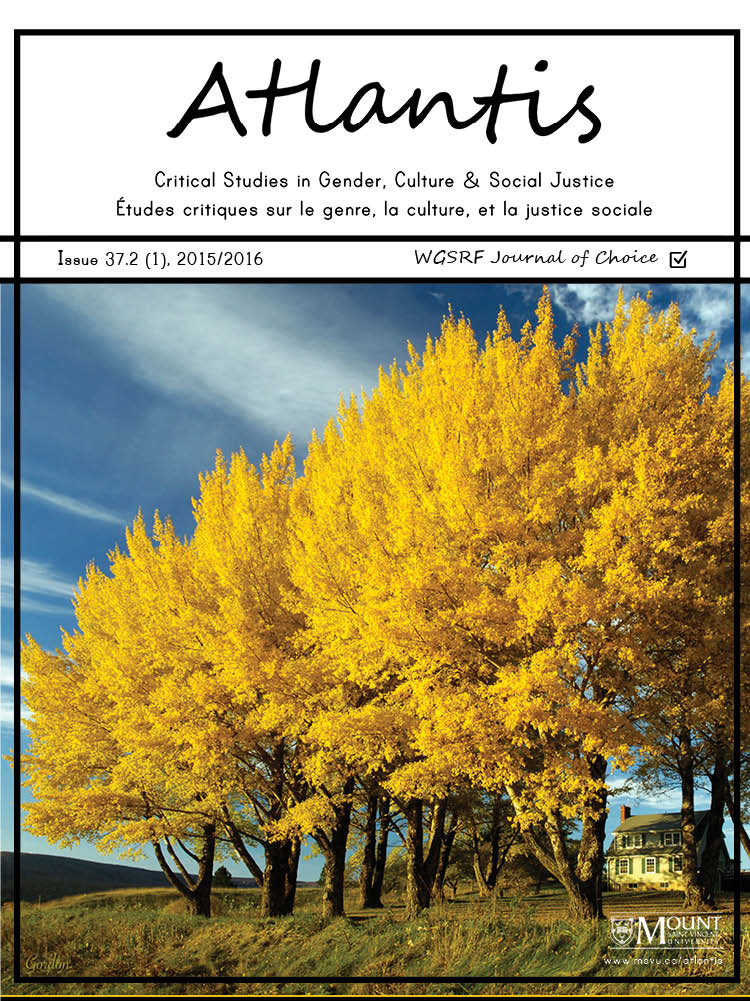Constitutionalizing Women's Equality Rights: There is Always Room For Improvement
Mots-clés :
constitutional law, gender rights, equality rights, Charter of Rights and FreedomsRésumé
Abstract
This article recommends six improvements in regard to women’s equality rights in Canadian constitutionalism. They are: 1) detail the harms; 2) advocate women’s equality; 3) delete formal equality; 4) make equality absolute; 5) stop comparing women; and 6) recognize intersectionality. Some of these recommendations are directed to legislators; others to judges. It is premature for women to celebrate. Canada’s constitutional guarantees of women’s equality rights are inadequate to the task of protecting us.
Résumé
Cet article recommande six améliorations en ce qui concerne les droits à l’égalité des femmes dans le constitutionnalisme canadien. Il s’agit des suivantes : 1) préciser les préjudices; 2) prôner l’égalité des femmes; 3) supprimer l’égalité formelle; 4) rendre l’égalité absolue; 5) cesser de comparer les femmes; et 6) reconnaître l’intersectionnalité. Certaines de ces recommandations s’adressent aux législateurs; d’autres aux juges. Il est trop tôt encore pour crier victoire. Les garanties constitutionnelles des droits à l’égalité des femmes au Canada sont insuffisantes pour nous protéger.
Références
Baines, Beverley. 2012. “Polygamy and feminist constitutionalism.” In B. Baines, D. Barak-Erez, and T. Kahana, eds., Feminist Constitutionalism: Global Perspectives. New York: Cambridge University Press, 452-473.
Baines, Beverley. 2012. “Comparing women in Canada” Feminist Legal Studies 20:2, 89-103.
Baines, Beverley. 2005. “Section 28 of the Canadian Charter of Rights and Freedoms: A purposive interpretation” Canadian Journal of Women and the Law, Vol. 17, 55-80.
Baines, Beverley. 1981. “Women, human rights and the Constitution.” In Audrey Doerr and Micheline Carrier, eds., Women and the Constitution in Canada. Ottawa: The Canadian Advisory Council on the Status of Women.
Crenshaw, Kimberlé. 1989. “Demarginalizing the intersection between race and sex: A black feminist critique of anti-discrimination doctrine, feminist theory and anti-racist politics,” University of Chicago Legal Forum. 89: 138-67.
Hughes, Patricia. 1999. “Recognizing substantive equality as a foundational principle,” Dalhousie Law Journal 22:2, 5-50.
Kome, Penney. 1983. The taking of twenty-eight: women challenge the constitution. Toronto: The Women’s Press.
McIntyre, Sheila. 2006. “Answering the siren call of abstract formalism with the subjects and verbs of domination.” In F. Faraday, M. K. Stephenson, and M. Denike Eds. Making equality rights real: Securing substantive equality under the Charter. Toronto: Irwin Law. 99.
Pothier, Dianne. 2006. “Equality as a comparative concept: Mirror, mirror, on the wall, what’s the fairest of them all?” In S. McIntyre and S. Rodgers Eds., Diminishing returns: Inequality and the Canadian Charter of Rights and Freedoms. Markham ON: LexisNexis Canada Inc, 135.
Téléchargements
Publié
Numéro
Rubrique
Licence
© Atlantis: Études critiques sur le genre, la culture, et la justice 2016

Cette œuvre est sous licence Creative Commons Attribution 4.0 International.
Les auteurs qui publient dans cette revue acceptent les conditions suivantes:
1. Les auteurs conservent les droits d’auteur et accordent le droit de première publication à la revue. L’œuvre est simultanément sous licence internationale Creative Commons Attribution 4.0 qui permet à d’autres personnes de la partager en citant dans les remerciements l’auteur de l’œuvre et sa publication initiale dans cette revue.
2. Les auteurs savent que les articles publiés dans Atlantis sont indexés et disponibles par le biais de divers outils de recherche universitaires et professionnels, y compris, entre autres, Erudit.
3. Les auteurs peuvent conclure des ententes contractuelles supplémentaires et distinctes pour la distribution non exclusive de la version de l’article publiée par la revue (c’est-à-dire, l’afficher dans un dépôt institutionnel ou la publier dans un livre), en signalant qu’elle a été initialement publiée dans cette revue.
4. Les auteurs sont autorisés et encouragés à prépublier leur œuvre, c’est-à-dire à la publier en ligne (dans un dépôt institutionnel ou sur leur site Web, par exemple) avant et pendant le processus de soumission. Cela peut conduire à des échanges productifs, ainsi qu’à ce que le travail publié soit cité plus tôt et plus souvent. Renseignez-vous davantage ici sur la prépublication.







